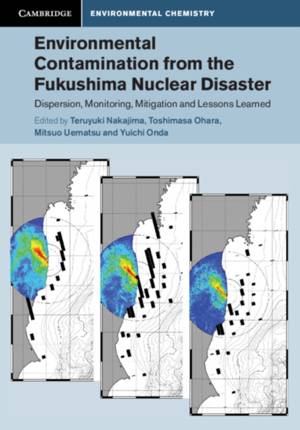
- Afhalen na 1 uur in een winkel met voorraad
- Gratis thuislevering in België vanaf € 30
- Ruim aanbod met 7 miljoen producten
- Afhalen na 1 uur in een winkel met voorraad
- Gratis thuislevering in België vanaf € 30
- Ruim aanbod met 7 miljoen producten
Zoeken
Environmental Contamination from the Fukushima Nuclear Disaster
Dispersion, Monitoring, Mitigation and Lessons Learned
€ 181,45
+ 362 punten
Omschrijving
The 2011 disaster at the Fukushima Daiichi Nuclear Power Station led to serious radioactive contamination of the environment. Due to transportation by seasonal wind and ocean currents, these radioactive materials have now been observed in many places in the Northern Hemisphere. This book provides a unique summary of the environmental impact of the unprecedented accident. It covers how radioactive materials were transported through the atmosphere, oceans and land. The techniques used to investigate the deposition and migration processes are also discussed including atmospheric observation, soil mapping, forest and ecosystem investigations, and numerical simulations. With chapters written by international experts, this is a crucial resource for researchers working on the dispersion and impact of radionuclides in the environment. It also provides essential knowledge for nuclear engineers, social scientists and policymakers to help develop suitable mitigation measures to prepare for similar large-scale natural hazards in the future.
Specificaties
Betrokkenen
- Uitgeverij:
Inhoud
- Aantal bladzijden:
- 372
- Taal:
- Engels
- Reeks:
Eigenschappen
- Productcode (EAN):
- 9781108475808
- Verschijningsdatum:
- 26/09/2019
- Uitvoering:
- Hardcover
- Formaat:
- Genaaid
- Afmetingen:
- 183 mm x 250 mm
- Gewicht:
- 907 g

Alleen bij Standaard Boekhandel
+ 362 punten op je klantenkaart van Standaard Boekhandel
Beoordelingen
We publiceren alleen reviews die voldoen aan de voorwaarden voor reviews. Bekijk onze voorwaarden voor reviews.







